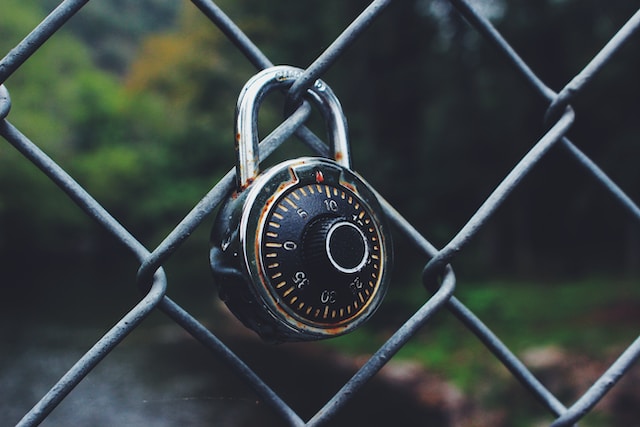What is 2 factor authentication and how does it work?
Two-factor authentication (2FA) is a security measure that adds an extra layer of protection to your online accounts and systems. It requires two forms of identification, instead of just one, to verify your identity and grant access.
The first factor is typically a password or PIN that you know, while the second factor is something you have or something you are. The second factor can be a security token, a mobile phone, or biometric information like your fingerprint or facial recognition.
When you attempt to access a system or account with 2FA enabled, you'll first need to provide your password or PIN as the first factor of authentication. Then, you'll be prompted to provide the second factor, which can vary depending on the method you've chosen. For example, if you're using a mobile phone as your second factor, you may receive a text message or a push notification with a code that you need to enter to complete the authentication process.
The purpose of 2FA is to make it harder for attackers to gain access to your accounts and systems, even if they have your password. This is because the second factor is typically something that only you have access to, such as your mobile phone or a physical security key. By requiring both factors of authentication, 2FA significantly reduces the risk of unauthorized access and helps keep your sensitive information safe from cyber threats.
What is an example of 2 factor authentication?
There are several examples of two-factor authentication (2FA) methods that are commonly used for online accounts and systems. Here are a few examples:
- One-time password (OTP) via SMS or mobile app: With this method, a unique code is sent to your mobile phone via text message or generated within a mobile app. You'll need to enter the code in addition to your password to complete the authentication process.
- Security token or key fob: This is a physical device that generates a one-time password that you'll need to enter in addition to your password.
- Biometric authentication: This method uses your unique biological characteristics, such as your fingerprint or facial recognition, as the second factor of authentication.
- Push notifications: With this method, you'll receive a push notification on your mobile device when you attempt to access a system or account. You'll need to approve the notification to complete the authentication process.
- Email verification: This method sends a unique code to your email address that you'll need to enter in addition to your password to complete the authentication process.
These are just a few examples of 2FA methods, and the specific options available may vary depending on the website or service you're using. It's important to choose a method that works best for you and ensure that you have backup methods in place in case you lose access to your primary method of authentication.
How do I set up two-factor authentication?
Setting up two-factor authentication (2FA) can vary depending on the website or service you're using, but generally, the process is straightforward. Here are some general steps to enable 2FA:
- Go to the settings or security section of the website or app where you want to enable 2FA.
- Look for the option to enable 2FA and select the method you prefer, such as SMS or a mobile app.
- Follow the prompts to set up your second factor of authentication. For example, if you're using a mobile app, you'll need to download the app and link it to your account.
- Once you've set up your second factor, you may be prompted to verify your identity by entering a code or scanning a QR code.
- Test your 2FA setup to make sure it's working correctly.
It's important to note that some websites or services may have specific requirements or restrictions for 2FA, such as only allowing certain types of authentication methods. Additionally, it's a good idea to have backup methods in place, such as backup codes or a backup security key, in case you lose access to your primary method of authentication.
Overall, enabling 2FA is a simple but effective way to enhance your online security and protect your sensitive information from cyber threats.
What happens when two-factor authentication is on?
When two-factor authentication (2FA) is enabled, it adds an extra layer of security to your online accounts and systems. Here are some of the things that happen when 2FA is on:
- You'll be prompted to provide a second factor of authentication in addition to your password when logging in to your account. This means that even if someone has your password, they won't be able to access your account without the second factor.
- You may need to set up your second factor of authentication before you can log in to your account. This can involve downloading an app, registering a phone number, or setting up a security key.
- Depending on the method you've chosen for your second factor, you may need to have access to a physical device, such as a phone or security key, in order to complete the authentication process.
- If someone tries to access your account without providing the correct second factor of authentication, they will be denied access.
Overall, enabling 2FA provides an additional layer of protection to your online accounts and systems, making it much harder for attackers to gain unauthorized access. It's a simple but effective security measure that can significantly reduce your risk of identity theft and other cybercrimes.
How do I turn off two-factor authentication?
Turning off two-factor authentication (2FA) may vary depending on the website or service you're using. However, in general, you can typically disable 2FA by following these steps:
- Go to the settings or security section of the website or app where you enabled 2FA.
- Look for the option to disable 2FA.
- Follow the prompts to confirm that you want to turn off 2FA.
- Test your account to ensure that 2FA has been successfully turned off.
It's important to note that turning off 2FA can weaken the security of your account, as it removes an additional layer of protection against unauthorized access. Before disabling 2FA, consider if there are alternative security measures that you can put in place to protect your account.
Also, some websites or services may have specific requirements for disabling 2FA. For example, you may need to provide additional verification or wait for a certain period of time before 2FA can be turned off. Always check the specific requirements before disabling 2FA to ensure that your account remains secure.
What are the 3 ways of 2 factor authentication?
There are generally three common ways of two-factor authentication (2FA):
- Something you know: This is usually a password or PIN that you enter to log in to your account.
- Something you have: This is a physical object that you have in your possession, such as a security key, smart card, or mobile device.
- Something you are: This is a biometric factor, such as a fingerprint or facial recognition, that is unique to you and cannot be easily duplicated.
Some websites or services may offer different options for the second factor of authentication, such as a one-time code sent via SMS or email. However, the three types of factors listed above are the most common and widely used.
It's important to note that using multiple types of factors can provide even greater security than relying on a single factor. For example, using a password and a physical object like a security key ensures that an attacker would need to have both your password and the physical key in order to gain access to your account. This is known as multi-factor authentication (MFA) and is often recommended as a best practice for online security.
What is the most common two-factor authentication?
The most common two-factor authentication (2FA) method is the combination of a password and a one-time code sent via SMS or email. This method is widely used because it's simple and convenient, as users don't need to carry any physical objects with them in order to authenticate.
With this method, after entering their password, users receive a one-time code on their mobile device or in their email inbox. They then enter this code on the website or app they're trying to access. This helps ensure that only authorized users with access to the correct mobile device or email account can log in.
While this method is widely used and can provide an additional layer of security, it's important to note that it's not the most secure 2FA method available. This is because SMS messages and email are not always completely secure and can be vulnerable to interception or hacking. Additionally, users may sometimes have difficulty receiving SMS messages, especially when traveling or in areas with poor cell reception.
For this reason, it's recommended that users consider using more secure 2FA methods, such as a security key or a mobile authentication app, especially for accounts with sensitive information or high levels of security.
Is two-factor authentication free?
Two-factor authentication (2FA) is often provided for free by many online services and websites. This means that you can enable 2FA on your accounts without having to pay any additional fees.
There are some instances where you may need to pay for a physical device like a security key, which is one of the methods of 2FA. However, this cost is typically a one-time expense and is not associated with ongoing subscription fees or costs.
It's important to note that some online services may offer premium or paid versions of their service that include additional security features, including more advanced 2FA options. However, these are typically optional and are not required to enable basic 2FA on your accounts.
Overall, enabling 2FA is a simple and effective way to increase the security of your online accounts, and it's often available for free. If you're not currently using 2FA, it's worth considering adding it to your accounts to help protect your sensitive information and personal data.
Do you need a phone for 2 factor authentication?
While many two-factor authentication (2FA) methods do rely on a mobile device, it's not always necessary to have a phone in order to use 2FA. There are several alternative methods that do not require a phone, including:
- Security keys: These are physical devices that plug into a USB port on your computer or connect to your mobile device via Bluetooth. They provide a secure second factor of authentication without the need for a phone.
- Authenticator apps: There are several mobile apps available that provide a second factor of authentication without relying on SMS or phone calls. These apps generate one-time codes that you can enter to log in to your accounts.
- Email: Some services also offer the option of sending 2FA codes via email instead of SMS.
It's important to note that even if a service requires a phone for 2FA, there are still options available for users who do not have access to a mobile device. For example, some services may allow you to use a landline phone or alternate contact methods to receive authentication codes.
Overall, while a phone is a convenient and common way to receive 2FA codes, it's not always necessary and there are alternative options available for users who do not have a phone or prefer not to use it for authentication.
What happens if two-factor authentication failed?
If two-factor authentication (2FA) fails, the user will not be able to access the account they are trying to log in to. This is because 2FA is designed to provide an additional layer of security to ensure that only authorized users can access an account, even if someone else has obtained their password.
If the user is unable to successfully complete the 2FA process, they may be prompted to try again or to use an alternative method of authentication. For example, if the 2FA method involves receiving a code via SMS or email, the user may need to request a new code to be sent.
In some cases, if the user is completely locked out of their account due to 2FA failure, they may need to contact the website or service's customer support to regain access. This process may involve providing additional verification or proving their identity before being granted access to the account again.
Overall, while 2FA can sometimes be an additional hurdle to accessing an account, it provides an important layer of security to protect against unauthorized access and potential data breaches.
Can hackers go through two-factor authentication?
While two-factor authentication (2FA) can provide an additional layer of security to help protect against unauthorized access to an account, it's important to understand that it's not foolproof and can still be vulnerable to hacking in some cases.
Hackers have been known to use various techniques to bypass 2FA, including:
- SIM swapping: This involves convincing a mobile carrier to transfer a victim's phone number to a SIM card in the attacker's possession, allowing them to receive 2FA codes intended for the victim.
- Phishing attacks: Hackers may attempt to trick users into providing their 2FA codes or login credentials through phishing emails or websites that mimic legitimate services.
- Social engineering: Hackers may try to convince users to provide their login credentials or 2FA codes through social engineering tactics such as posing as a customer support representative or IT professional.
- Malware: Hackers may use malware to intercept 2FA codes or steal login credentials directly from a user's device.
While these techniques can be effective, they are generally more difficult to execute than simply guessing a user's password. Additionally, using stronger 2FA methods such as security keys or mobile authentication apps can provide greater protection against these types of attacks.
Overall, while 2FA is not completely foolproof, it can still provide an additional layer of security to help protect against unauthorized access to accounts. Users should always be vigilant and take additional precautions to protect their accounts, such as using strong, unique passwords and keeping their devices and software up to date.



